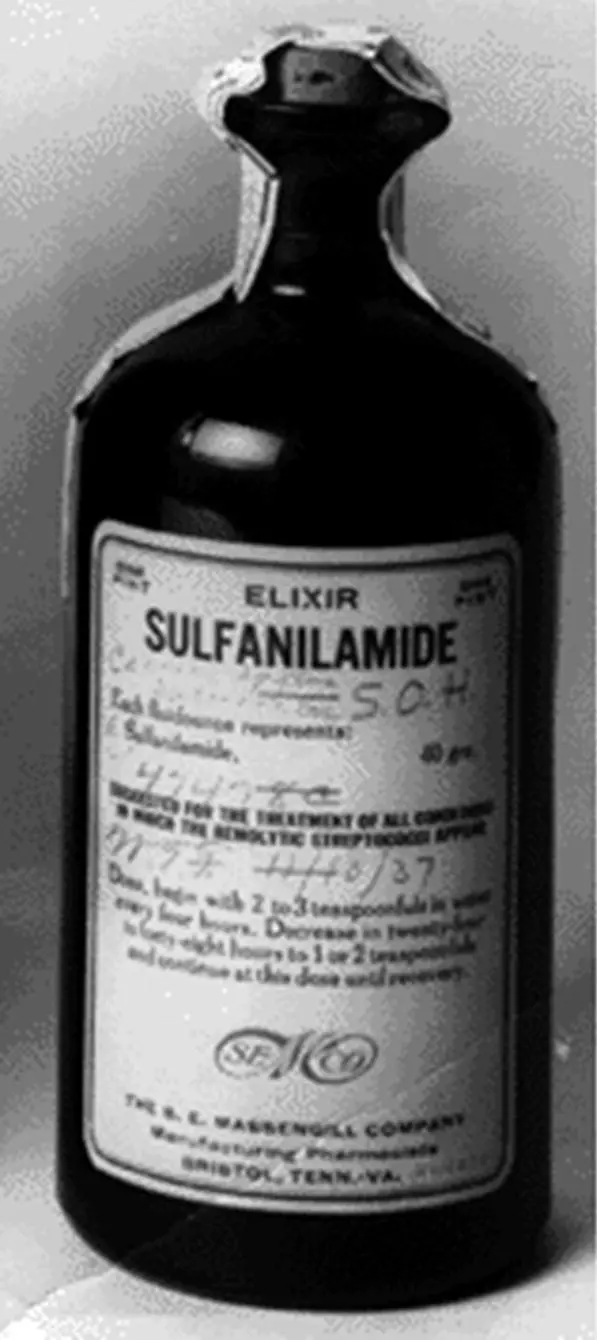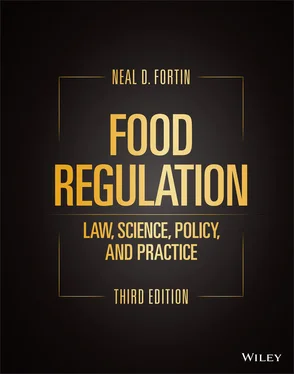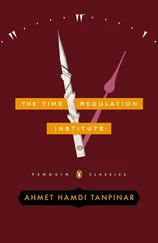Neal D. Fortin - Food Regulation
Здесь есть возможность читать онлайн «Neal D. Fortin - Food Regulation» — ознакомительный отрывок электронной книги совершенно бесплатно, а после прочтения отрывка купить полную версию. В некоторых случаях можно слушать аудио, скачать через торрент в формате fb2 и присутствует краткое содержание. Жанр: unrecognised, на английском языке. Описание произведения, (предисловие) а так же отзывы посетителей доступны на портале библиотеки ЛибКат.
- Название:Food Regulation
- Автор:
- Жанр:
- Год:неизвестен
- ISBN:нет данных
- Рейтинг книги:4 / 5. Голосов: 1
-
Избранное:Добавить в избранное
- Отзывы:
-
Ваша оценка:
- 80
- 1
- 2
- 3
- 4
- 5
Food Regulation: краткое содержание, описание и аннотация
Предлагаем к чтению аннотацию, описание, краткое содержание или предисловие (зависит от того, что написал сам автор книги «Food Regulation»). Если вы не нашли необходимую информацию о книге — напишите в комментариях, мы постараемся отыскать её.
Food Regulation: Law, Science, Policy, and Practice
Food Regulation: Law, Science, Policy, and Practice, Third Edition,
Food Regulation — читать онлайн ознакомительный отрывок
Ниже представлен текст книги, разбитый по страницам. Система сохранения места последней прочитанной страницы, позволяет с удобством читать онлайн бесплатно книгу «Food Regulation», без необходимости каждый раз заново искать на чём Вы остановились. Поставьте закладку, и сможете в любой момент перейти на страницу, на которой закончили чтение.
Интервал:
Закладка:
However, major revision of the food law stalled until a precipitous event fell while a significant segment of the public was paying attention. Sulfanilamide, one of the new sulfa drugs, was being used effectively to treat strep throat and other bacterial diseases. To increase the palatability of the bad tasting drug, a drug company mixed the antibiotic with diethylene glycol, a sweet‐tasting liquid. The mixture was called Elixir of Sulfanilamide and shipped in the fall of 1937 ( Figure 1.1). Within weeks, deaths were reported to FDA. At least 107 died in an often‐agonizing death. Many of the dead were children who received the elixir for strep throat. 14

FIGURE 1.1 Elixir of sulfanilamide.
Source : Image source: FDA.
The manufacturer admitted it had performed no safety tests. None were required. Therefore, the company could not be prosecuted for selling a product with a poisonous ingredient. Ultimately, the company was convicted of misbranding because their product did not meet the definition of “elixir” because diethylene glycol was substituted for alcohol. The company received just a fine, and there was no jail time.
However, the tragedy spurred legislative action, and in 1938, the Food, Drug, and Cosmetic Act (FD&C Act) was enacted. The FD&C Act required premarketing approval and proof of the safety of drugs. The act also:
extended government control to cosmetics and therapeutic devices,
provided that safe tolerances be set for unavoidable poisonous substances in food,
authorized standards of identity, quality, and fill‐of‐container for foods,
authorized factory inspections, and
added court injunctions to the previous penalties of seizures and prosecutions.
NOTE
1 1.1 Jamaican Ginger Paralysis. “Jake Leg Blues,” “Jake Walk Papa,” other songs from 1929 and the early 1930s lamented paralysis caused by drinking Jamaican ginger extract, commonly called “Jake.” The ginger extract typically contained 70–80 percent alcohol, and during Prohibition, some imbibed it for the alcohol. The extract avoided the alcohol prohibition by being sold as medicine. Jake Leg, a paralytic illness, was caused by intentional adulteration with tri‐orthocresyl phosphate (TOCP), added to avoid prohibition detection while producing a more palatable alcoholic beverage. However, TOCP is a slow‐acting neurotoxin. Over 1930 and 1931, this disease affected tens of thousands of Americans with estimates as high as 100,000. In 1930, the paralytic illness was traced to a single company, Boston‐Hub Products. No law required ensuring the safety of ingredients, so the company had violated no law by adding a poisonous substance. Ultimately, Hub president, Harry Gross, and his brother‐in‐law and part owner, Max Reisman, were charged with violations of the Prohibition Act and for selling “Ginger Extract USP” that differed from the USP standard. Each was fined $1,000 and given a two‐year suspended prison sentence. Jake Leg was caused by a single company, but due to the scandal, the many companies that sold ginger extract saw their market collapse and disappear. John Parascandola, The Public Health Service and Jamaica Ginger Paralysis in the 1930s, 110 PHS CHRON., No. 3, 361–63 (May–June 1995).
The food laws continued to evolve based on the concerns and issues of the times. In the 1950s, concerns over synthetic food additives, pesticides, and cancer were high. Consequently, in 1958, the Food Additives Amendment to the FD&C Act was enacted, requiring the evaluation of food additives to establish safety. The Delaney Clause forbade the use of any food additive that was found to cause cancer in humans or animals. In 1960, the Color Additive Amendment to the FD&C Act was enacted, which required manufacturers to establish the safety of color additives in foods, drugs, and cosmetics.
After a number of well‐publicized outbreaks of botulism food poisoning from canned foods, the FDA issued Low‐Acid Food Processing Regulations in 1973. After deaths from cyanide placed in Tylenol capsules, FDA issued the Tamper‐Resistant Packaging Regulations in 1982. In 1983, Congress passed the Federal Anti‐Tampering Act, which makes it a federal crime to tamper with packaged consumer products.
Throughout the 1980s, there was a growing interest in the effect of nutrition on health along with increased marketing of foods to fulfill health concerns. At the same time, food processing continued a trend toward becoming nationally distributed rather than local. Various states implemented nonuniform laws to regulate health and nutrition claims, which the national industry found hindered interstate commerce. In 1990, Congress enacted the Nutritional Labeling and Education Act (NLEA), which requires nearly all packaged foods to bear nutritional labeling. The act also requires nutritional and health claims for foods to be consistent with terms defined by the FDA.
Then, impetus grew for enhanced food safety regulation over several years of high‐profile food recalls, foodborne illness outbreaks, and consumer advisories. In 2006, fresh spinach sickened over 200, and the fresh greens industry suffered huge losses. In 2007, nearly 2,000 pet food products were recalled due to melamine adulteration of gluten. In 2007, more than 600 people became ill from contaminated peanut butter. In 2008, imported peppers sickened over 1,400, but not before tomatoes were misidentified, causing huge losses to the tomato industry. In 2009—in what may have been the precipitating event—nine deaths and hundreds of illnesses were traced back to peanut paste from the Peanut Corporation of America. In the end, nearly 4,000 consumer products were recalled with an unusually long recall span of over a year. Finally, in 2010, nearly 2,000 cases of illness were linked to eggs from two farms in Iowa, and more than 500 million eggs were recalled.
On January 4, 2011, President Barack Obama signed the FDA Food Safety Modernization Act (FSMA) into law. 15 This amendment of the Federal FD&C Act is the most significant revision of U.S. food law since 1938 when the FD&C Act replaced the Food and Drug Act of 1906. The law is historic both in breadth and depth of its coverage.
With this background history, it is time to review some aspects of the U.S. legal system.
1.3 THE U.S. LEGAL SYSTEM
To understand the legal basis of food regulation in the United States, it is necessary to have an overall understanding of the U.S. legal system and some of the key concepts in American jurisprudence. First, let us look at the basic terminology.
Law: (1) a binding custom of a community; (2) a rule of conduct or action prescribed or enforced by a controlling authority; (3) the whole body of such rules; (4) the control brought about by the enforcement of such law; (5) the legal process; and (6) the whole body of laws relating to one subject.
As you can quickly see, even defining the term “law” is not a simple proposition. To simplify the terminology, this text follows the predominant American meanings for the term “law” and its synonyms:
Law implies imposition by a sovereign authority. Law commonly refers to the entire body of law on the subject, but also is a synonym for “statute.”
Statute means a law enacted by a legislative body.
Regulation implies prescription by administrative agency to carry out their statutory responsibilities. Federal regulations are first published in the Federal Register, which is published daily and organized by date and page number. Later, the regulations are codified in the Code of Federal Regulations (C.F.R.). 16
Читать дальшеИнтервал:
Закладка:
Похожие книги на «Food Regulation»
Представляем Вашему вниманию похожие книги на «Food Regulation» списком для выбора. Мы отобрали схожую по названию и смыслу литературу в надежде предоставить читателям больше вариантов отыскать новые, интересные, ещё непрочитанные произведения.
Обсуждение, отзывы о книге «Food Regulation» и просто собственные мнения читателей. Оставьте ваши комментарии, напишите, что Вы думаете о произведении, его смысле или главных героях. Укажите что конкретно понравилось, а что нет, и почему Вы так считаете.












